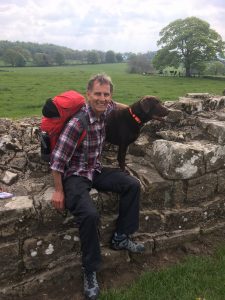I still haven’t been to Kew to discover to what extent, if any, Fairey had dealings with the security services regarding Russia. Clearly a day at the National Archives has to be a priority after Easter, if only because I need to check the Admiralty account of HMS Evadne’s involvement in the sinking of a U-boat off Bermuda in 1944, not long before the requisitioned motor cruiser was returned to CRF. I’ve been writing recently about Evadne’s role from 1931 to 1939 as Fairey’s luxury floating hotel, second office, and support vessel for his racing yachts, whether 12 metre (Modesty, Flica, and Eviane) or J Class (Shamrock V). The original intention was to cover sailing in the penultimate chapter, along with field sports and conservation, but CRF raced only from 1927 to the eve of the Second World War, and so the relevant section fits more neatly within chapter 7, on the second half of the 1930s. The latter chapter remains work in progress as I still have to write about my man’s private life from the moment when he married for the second time and again became a father – of John and Jane. Chapter 8 on the Second World War, and chapter 9 on the last ten years of Fairey’s life, will lead me to the conclusion some time next year – so will end the most interrupted project I have ever worked on: is there at last light at the end of the wind tunnel? Mention of John Fairey reminds me that I also have to visit Bossington to consult files held there re sailing. The friendly rivalry between Fairey and Tommy Sopwith, later neighbours in the Test Valley, is a remarkable story, with TOMS able to launch a second challenge for the America’s Cup in 1937, with Endeavour II, because twice CRF failed to convince the New York Yacht Club to race yachts smaller than the J Class preferred by the Americans – I know that in 1935-6 Fairey tried to launch a challenge based on a wholly new yacht – the ‘K Class’ – fifty tons lighter than the huge J Class yachts, but the present owner of Flica claims that in 1933 he tried to secure the NYYC’s agreement to race ‘second rule’ 12 metre yachts at a time when Flica and her crew were arguably the most successful combination either side of the Atlantic. I have been trying to contact America’s Cup historian, Bob Fisher, who lives just outside Lymington, to find out more but so far been unsuccessful – clearly the friendly phone call is required. I had no idea until starting this research that ’12 metre’ refers not to the length of the boat but a complex formula for determining its size, and the algorithm periodically changes – the 1934 season saw the introduction of the ‘third rule’, which had important consequences for Fairey. What those consequences were, the book will reveal.
Mar 26


